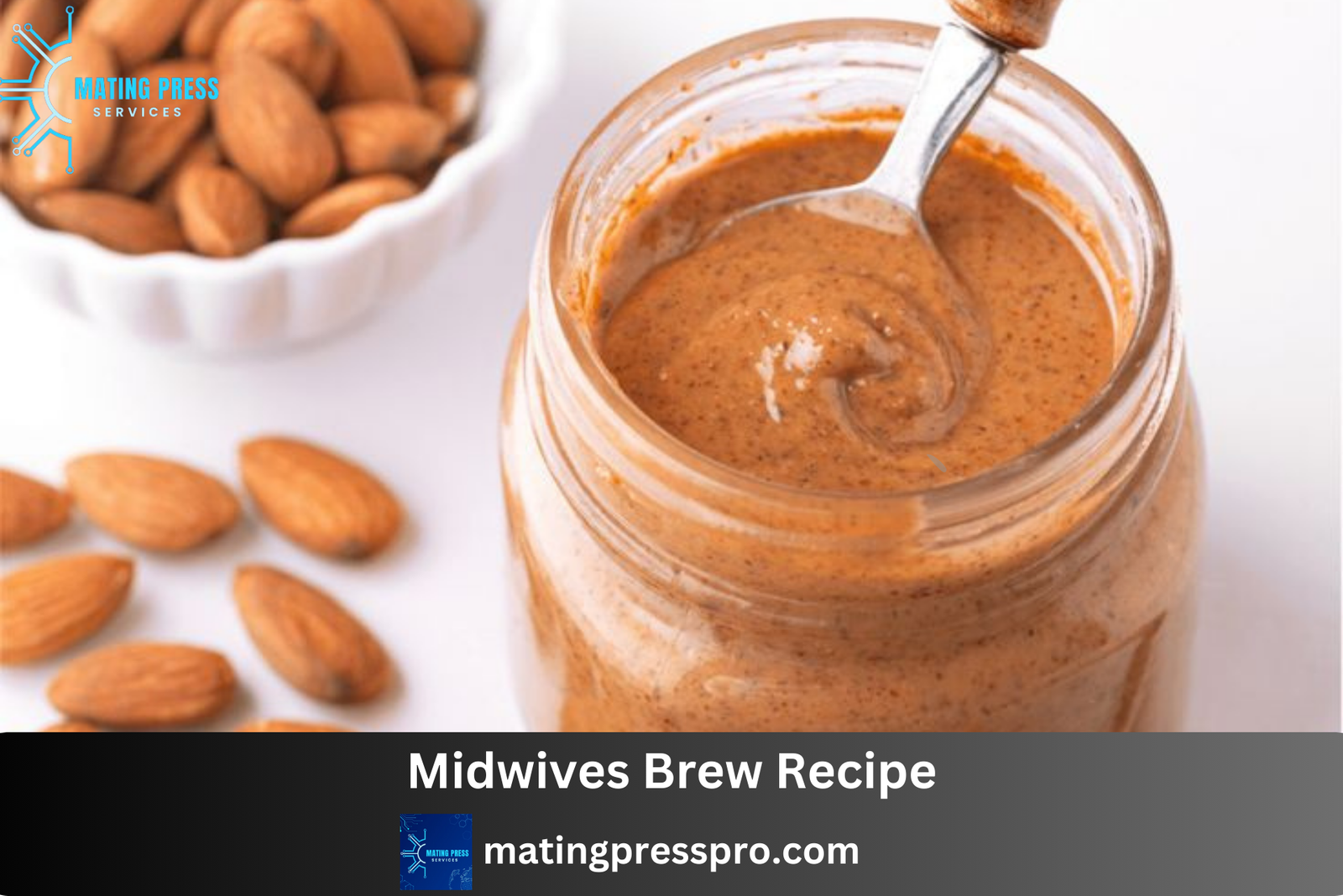Midwives Brew Recipe: The Natural Induction Method

Pregnancy is an exhilarating experience filled with hope, happiness, and quite a bit of discomfort as one nears the expected date of delivery. With the due date of pregnancy approaching most women seek different means mostly natural, to help shorten the period. One such method is the Midwives Brew. This herbal drink is not new as it has been used for many years to help women during labor. Such is the aim of this article, to give you enough information on the Midwives Brew, from its components, working mechanisms, effectiveness, safety measures and other options available.
Understanding Midwives Brew
Ayarkpa Khaan or Midwives Brew is a herbal home remedy over the ages to advance labour. Ever since the midwives assisted birth, this brew has possibly been related to extractions taken by pregnant women who exceed the EDD or who have minimal discharge in labor progress. The tea composition is wont to be effective because all the core components aid one aim of making the uterus move to trigger a labor process. Over the last few years there has been increase in the use of Midwives Brew as more and more women prefer remedies rather than going for the medical induction of labor.
The History of Midwives Brew
The habit of using herbal substances to lessen the waiting period before childbirth is in existence for some centuries now, one of the commonly used methods being the Midwives Brew. Originally, the practice was embraced by the modern day midwives who did not use to undergo surgery and instead used herbs and some ingredients to make childbirth easier. The composition of the brew has changed in the course of history to include more and more ingredients which are claimed to be labor useful.
Though the brew cannot be associated with any specific culture as the exact origin is vague, it has seen adoption in Europe and America among midwifery populations. Its limitations in some quarters make it lose ground, yet many are those who choose it for pregnancy due to some reasons or wish to try other options first.
The Appeal of Natural Induction Methods
Midwives Brew for instance and other natural induction methods reach out to many expectant mothers for its characteristics of being non-invasive and wanting to operations done on them. Women may choose natural induction for several reasons. They include the desire for a more natural and holistic method; fear of possible adverse effects of medical induction or simply wishing to have as less medical interventions as possible during labour and delivery, Or their reasons for midwives.
They are variables even in practice which can forget the efficacy of the medical nursing way of birth. Offering simple and easily made components including Midwives Brew, there is always an option for natural induction even if it is seldom.
Ingredients of Midwives Brew and Their Functions
The Midwives Brew recipe consists of ingredients believed to assist in the natural stimulation of the labor process. The main purpose of each ingredient resides in making the brew more effective in the stimulation of contractions and the readiness of the body to go into labor.
- Castor Oil: Known as the major and active ingredient of the Midwives Brew, castor oil is popular for its wide use as a laxative. Castor oil’s main effect is on the intestines, which, when aimed at or absorbed, creates a potential conflict since the intestines are located close to the uterus and may elicit contractions. This is purported to provide a labor encouraging stimulant which makes these oils widely sought for in induction of labor procedures. However, it is also the most contested medicinal in the formulation because of the potential side effects such as excessive and uncontrollable passing of motion, abdominal cramping, and dehydration.
- Almond Butter: There are two other reasons for the addition of almond butter into brew rather than just food taste improvement; one being to give the human body some minerals and vitamins which are essential in the brew. It is characterized by high levels of healthy fats and proteins, which are favorable to blood sugar control and metabolism, thus offering the sustained energy required in labor. Moreover, almond butter also helps in the plan of the rest of the contents for better utilization of the broth.
- Apricot Juice: The inclusion of apricot juice in the recipe is due to its sweetness and its desirability in nutrients. It provides the body with natural sugars, which can be used to energize one’s self during labor. On top of that, apricot juice is a rich source of vitamins and minerals, such as vitamin A and C, which are beneficial to health.
- Lemon Verbena Tea: This type of tea is convenient since it possesses anxiolytic effects and is therefore helpful in relieving most of the anxiety and distress. Regarding Midwives Brew, lemon verbena tea works to relieve the discomfort of the GIT tract and offers a delicate and enjoyable taste, which makes the drink bearable. Its soothing properties may also aid in inducing restfulness during labor, thus averting any chances of bringing on labor and contractions too early.
How to Prepare Midwives Brew

While the preparation of Midwives Brew is quite simple, adhering to the recipe is necessary, to the best possible extent, for effective and safe use of the medicine. The preparation is a procedure of measuring the mentioned components and mixing them in a certain ratio, which will lead to an appetizing beverage.
Ingredients Needed:
- Measuring 2 tbsp of Castor Oil
- Measuring 2tbsp of Almond Butter
- Apricot Juice measuring 8 ounces in volume
- 1 cup britain lemon tea
Step-by-Step Preparation:
- Steep the Lemon Verbena Tea Bag: Start by heating up some water and putting 1 tea bag of lemon verbena in the hot water for around four to five minutes until it is cooled off completely. The tea should be kept hot to help support relaxing. Allow it to cool down a little before you take it other ingredients.
- Put All Ingredients in a Blender: Then stir in the castor oil, dry almond butter, and hot apricot juice followed by the lemon verbena tea. It is important to use the blender at this stage in order to combine all the above ingredients and make a smooth consistency.
- Thicken, About 30 Seconds: This should take about thirty seconds or until everything has been well incorporated; not a single ingredient should stand on its own. It is supposed to be very creamy, and thus the almond butter must melt completely
- Take it Straight & Quick: Transfer the liquid in a cup and sip it immediately. The formula works best when taken on an empty stomach since it is absorbed faster and nausea is reduced.
- Hydration and Rest: With the use of the brew, make sure to drink adequate water afterward to avoid dehydration. Rest and give time for your body to respond after taking the brew. The results may not appear immediately and may take a couple of hours to show, so patience is a virtue.
What Mechanism of Midwives Brew Achieves Due Effect?
The way Midwives Brew exerts its therapeutic effects is by using castor oil as the main ingredient targeting the digestive system. Castor oil is well known for the stimulation of the bowels and results in more bowel movements when taken orally. Sometimes this stimulation of bowels can also trigger uterine contractions as there are intestines located right next to the uterus. These contractions of the uterus may assist in the onset of labor in women who are round the end of their due period or are already having early signs of labor.
Castor oil has long enjoyed the status of a natural remedy for the qualification of start of labor. The effects benefit from the chemical, ricinoleic acid, which attaches to the smooth muscles in the intestines and the uterus thus bringing about a contraction. The fight of the intestinal region might result in the grunt contraction of the uterus thereby bringing about the action of labor. Nonetheless, this method of labor induction is not entirely safe. the application of this agent frequently results in extreme vomiting and puppy whiskers fever.
Explain Below – Supporting Ingredients and Their Effects
Although castor oil constitutes the majority of the active component in Midwives Brew, the rest of the ingredients and preparations do not sit idly, but rather assist the effectiveness of the brew as a whole. Almond butter contains nutrients and manages blood sugar levels helping prevent low blood sugar levels during the time of labor. Ayurvedic Medicine uses warm Apricot juice during labor as it has healthy and natural sugars and tastes pleasant. To attain a comfortable action during the labor period, lemon verbena tea alleviates the feeling of anxiety and stress.
Midwives Brew – What is the Effectiveness?
Midwives Brew has varying results when used for labor induction since it doesn’t work the same for everybody. There are those who begin to have contractions just within hours after taking the brew while in other women there would be no impact at all. The effectiveness of the brew can also be related to several factors such as:
- Gestational Age: More women who are overdue or who are near term would be more likely to respond to the brew since the body is already preparing for labor.
- Individual Response: It has to be understood that every woman will respond differently to any of the natural induction. Some women respond very sensitively to some or all of the ingredients found in the brew, while others do not respond to the brew at all.
- Baby’s Position: Similarly, position of the baby can also account for effectiveness of the brew. If the baby is not in position to be born the brew may not induce labor as required.
- Previous Pregnancies: Repeat mothers may have different result’s to the brew as compared to mothers on their first pregnancy. Those women who have been through labor would find the brew to be more effective as the body has been previously exposed to the experience of labor.
Safety Considerations and Self-Management of Risks
Although Midwives Brew is a popular natural intervention to encourage Labour, it has its fair share of side effects and risks. One must weigh these risks and ask for a healthcare provider’s advice before trying the brew.
Possible Side Effects
- Gastrointestinal distress: The gastrointestinal side effects are the most common adverse effect of the Midwives Brew. They include things like cramping, diarrhea and even nausea. This is mainly due to the castor oil which is used as a laxative. Such symptoms even though mild are anticipated. On the contrary abdominal distress may lead to dehydration and depletion of electrolyte levels.
- Dehydration: Tend to have a laxative effect mostly from castor oil resulting in loss of fluids thus possible dehydration. It is advisable to have plenty of water even before or after the brew is consumed.
- Excessive uterine contractions: At times, it is possible for the brew to give excessive or prolonged contraction whereby the baby is put at risk of stress decomplications. Contraction pattern should be observed where stress is applied and medical attention sought after over or frequently intense contractions.
- Allergic Reactions: Probably the least common side effect, some people might be allergic to one of the components of the brew, almond butter or even apricot juice. It should be noted that in case of any allergies, one should seek the advice of a physician before making an attempt to make the recipe.
Who Should Avoid Midwives Brew?
Midwives brew does not fit all women, some groups
of women have to refrain from its use. These include:
- Women with High-Risk Pregnancies: Women having high-risk pregnancies like those with gestational diabetes or preeclampsia and those who have a history of preterm labor should never use Midwives Brew.
- Women with Gastrointestinal Conditions: Women with other gastrointestinal conditions including Crohn’s disease and irritable bowel syndrome, should avoid the brew due to the fact that the brew may cause them extreme gastrointestinal discomfort.
- Women with Allergies to Ingredients: If you have known allergic reactions to any component of the brew for instance nuts (almond butter) or apricots, it is better to keep off the brew.
Alternatives to Midwives Brew for Inducing Labor

There are several other natural methods to consider and to use for labor induction for those who may not like the Midwives Brew and for whom it is not suitable. Their rationale is that these methods are generally safer and may be appropriate for some individuals.
1. Walking and Light Exercise
The baby is encouraged to settle in a good position for delivery and the uterus stimulated by means of physical activity such as walking or light exercises. This is also very effective because gravity helps support the efforts to move the baby into the pelvis and might therefore trigger the onset of labor. Light exercises like prenatal yoga and stretching will in turn strengthen all the muscles active during the childbirth process and hence prepare the body for the inevitable labor.
2. Nipple Stimulation
It is a method of inducing labor by natural means using nipple stimulation to release a hormone called oxytocin which is responsible for the contraction of the uterus. In this method, the occurs rubbing or rolling for a few minutes of the nipples, mimicking the action of the baby sucking. However, it is worth mentioning that axial and breast stimulation should be exercised with adequate precautions since they can lead to stripping in very strong contractions.
3. Acupuncture and Acupressure
Acupuncture and acupressure represent two verticals of traditional Chinese medicine considered efficacious in stimulating labor as well as in relaxation enhancement. Acupuncture is a procedure using fine needles for insertion within specified points of the body while acupressure employs fingers in stimulating these points. Both techniques aim at harmonizing the energy flow in the body and increasing the levels of natural labor hormones.
4. Eating Certain Foods
So-called labor-inducing foods are reported to work in such a way that women can expect some form of labor but then quite ouch there is very little scientific proof for these claims. Over the counter options include:
- Dates: Dates have been promoted in the last weeks of pregnancy to help soften the cervix and decrease the incidences of elective induction. Other studies have shown that ingestion of dates may increase their cervical readiness for labor.
- Spicy Foods: It is said that spicy foods help the local digestive tract and create the conditions for the initiation of contractions. Unfortunately, this technique is not widely used since it may lead to persistent heartburn or lead tummy cramping.
- Pineapple: Pineapple contains an enzyme called bromelain, which is suggested to aid in the softening of the cervix and the inducement of labor. Though they do not work very well, eating a fresh pineapple and/or drinking the juice thereof is said to encourage labor.
5. Herbal Teas and Supplementation.
Various herbal teas and supplements are said to facilitate bodily preparation for childbirth and help in inducing contractions. These include:
- Red Raspberry Leaf Tea: The tea is said to strengthen and tone the uteгine muscles which are required for adequate contractions during and after delivery. It is common to drink the tea within the last few weeks of pregnancy to help the body prepare for delivery.
- Evening Primrose Oil: Evening primrose oil is said to assist in softening the cervix and getting the body ready for childbirth. This can be taken internally or inserted vaginally but should be done with the supervision of a practitioner.
The Importane of a Primary Care Physician
However, before ever trying any natural method of inducing labor such as Midwives Brew, it is advisable that the patient speak with her health care provider or midwife. They will evaluate your own individual circumstances and tell you how to handle yourself, what methods to use, and how to monitor your progress so as not to endanger yourself and the baby. She is also in a position to determine if there are risks or contraindications based on the health status of the patient and her pregnancy status.
FAQ’s About Midwives Brew
What is the active ingredient in Midwives Brew?
In fact, castor oil is the active ingredient in “Midwives Brew“. Castor oil is a strong laxative that is made from the castor plant seeds. It is thought to bring on labor by causing the intestines to contract and in turn, cause contraction of the uterus. The other components of Midwives Brew include almond butter, apricot juice, and lemon verbena tea all of which are meant to enhance the effects of castor oil by improving digestion, supplying nutrition as well as soothing the digestive tract.
How long does it take for Midwives Brew to kick in?
There is no certain answer as to how long or how fast “Midwives Brew” is effective on individuals since they are individual differences in response to the drink. Some women may begin to have contractions in a span of between two to six hours after consumption of the brew, while for some it may take longer period or no effects may be experienced at all. The answer has been elusive owing to several things including the gestational age of the woman, how well her body responds to the brew and how close she is to the time of the natural onset of labor.
What is the claimed success rate for women who use Midwives Brew?
There are no any written documents which pledge to the fact that the Midwives Brew is effective in inducing labor among women. This is because the outcome tend to be quite different for each and every individual. Many women have been reported to go into labor within a few hours of consuming the brew when their delivery time is nearing or if they have already started labor, but there were no positive outcomes witnessed within a week after consuming the herbal brew. Actual statistics in terms of success and failure of the program is therefore very hard to find. The efficiency is more or less dependent as to the condition of the woman’s body especially whether or not the woman has already been activated for delivery or the cervix is ripened enough to allow for dilation.
What is the best labour inducing drink in Germany?
The German cocktail is considered to induce labor in a less painful way. The preparation includes ingredients such as castor oil, apricot juice, and champagne or white wine. This is because it is thought that exposing the colon with castor oil and calming the mother with a little spirit might bring on labor. Nevertheless like any other method utilized to induce labor that happens to be non pharmaco therapeutic measures, the German cocktail should not be used alone without first getting medical advice regarding its safety.
Which food helps the cervix and why?
Certain foods are applied as means that are believed to help soften the cervix and prepare it for labor but sufficient scientific studies are yet to be done to validate these claims. Some of the foods that have been encouraged most include:
1. Dates: Through some studies taken it is said that those who eat dates towards the end of the pregnancy period have better chances of cervical ripening and have lower induction rates.
2. Pineapple: Pineapple has bromelain which is said to aid in cervical softening. Yet this is normally needed in high quantities for any effectiveness to be seen.
3. Spicy Foods: It is stated that spicy foods can activate the gut making it easier to use spice to aid in the use of induced labor even though this is mostly hearsay.
How to dilate faster?
In order to dilate faster the open cavity of the body should be relaxed and the cervix must undergo softening and opening. Natural ways of relaxing or softening the cervix in order to induce faster dilation include:
1. Walking and Light Exercise: Exercise including movement in the form of walking may enable the baby to get in line for delivery and in so doing will enable the increase of dilation.
2. Nipple Stimulation: Light nipple massage induces the release of oxytocin which causes contractions and hence may help in speeding the rate of cervical dilation.
3. Birthing Ball: In experience, sitting on a birthing ball and bouncing or rotating the hips encourages the baby to descend deep into the pelvis for more efficient cervical dares.
4. Staying Relaxed: Dilation of the cervix may take a leisurely pace due to stress or anxiety. Taking deep breath or meditation or even a warm bath can promote the mind and body relaxation which, in turn, helps in dilation.
5. Intercourse: Prostaglandins found in sperm could soften the cervix and this can even elicit contractions through orgasm. It is important however to consult a health practitioner regarding this method of intervention, especially where there are issues with the pregnancy.
It is essential to understand that these methods may assist with dilating the cervix. However, as with any medical solution, each woman’s case is unique, and so what works for one may not work for the other. Make sure you see a physician first before attempting any new method and verify its appropriateness to you.
Conclusion
Midwives Brew is a well-known natural uterine stimulant that has been employed by both midwives and pregnant women for many decades. Despite its possible efficacy in some women, caution must be exercised as to who are likely to employ its effectiveness without risking any adverse side effects. Some of the ingredients in the brew, principally castor oil, can have serious side effects and may not work well with some women. There are also various natural ways of induction for those who still want to have more natural induction, but these would probably be much safer and better considering the situation.






